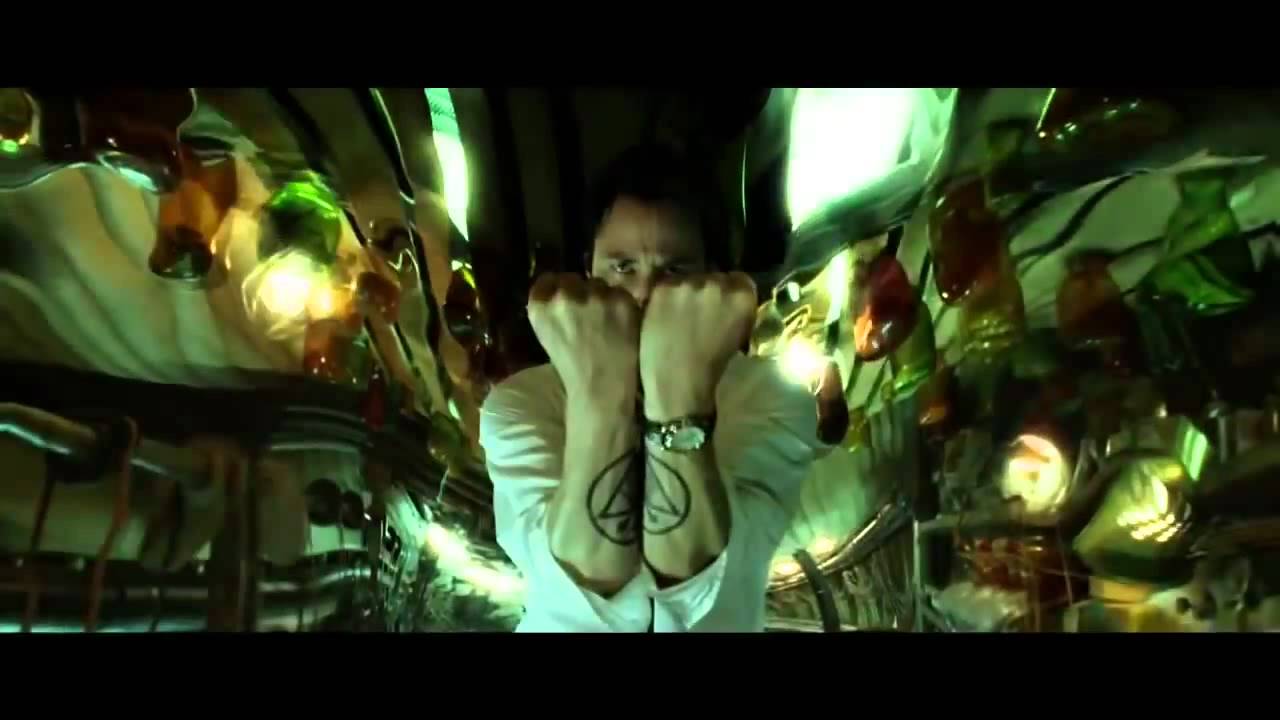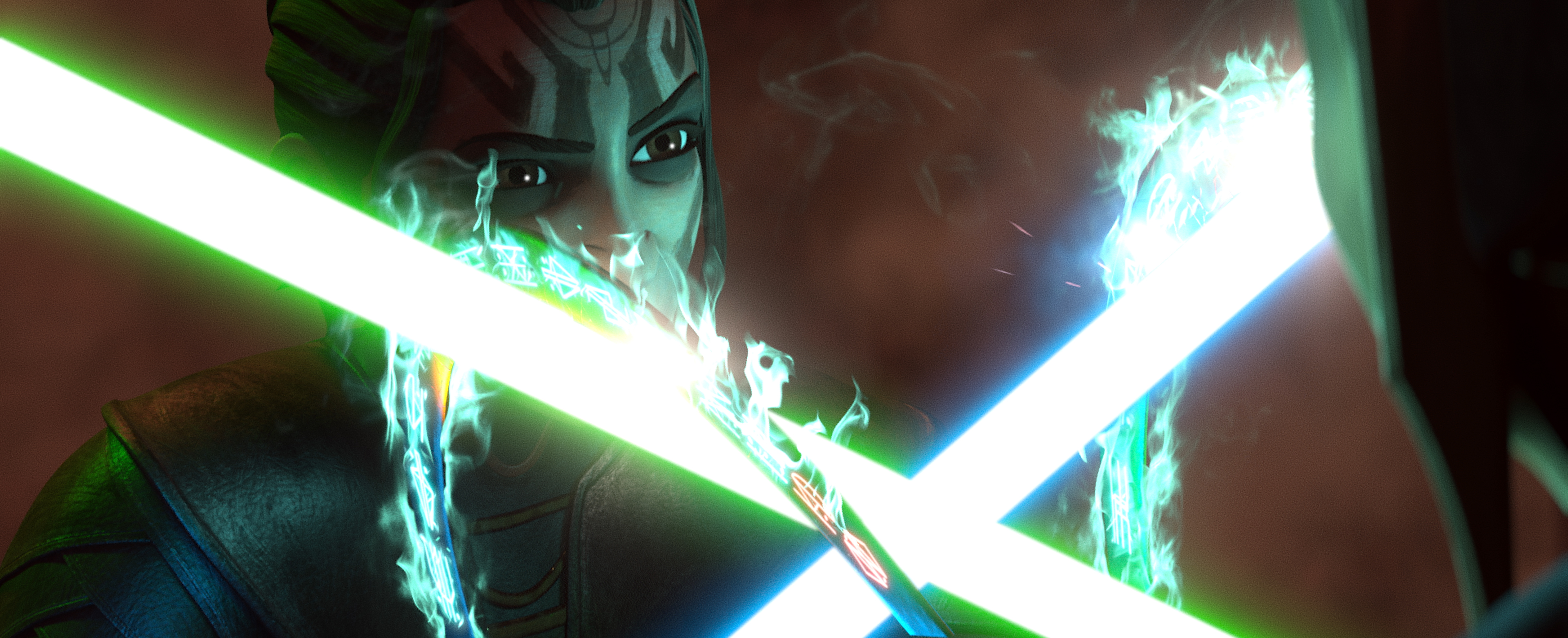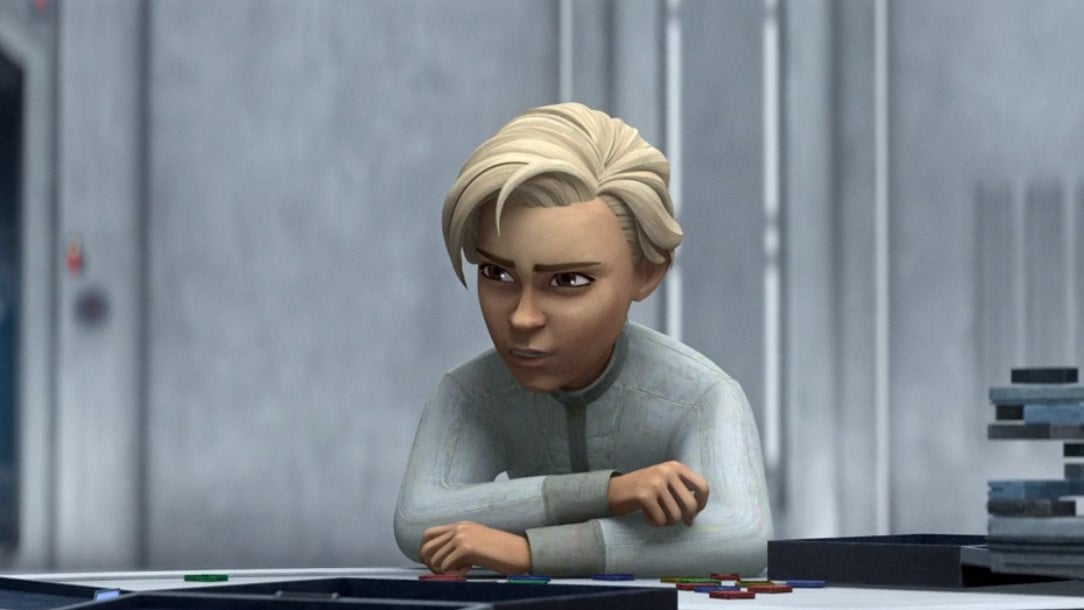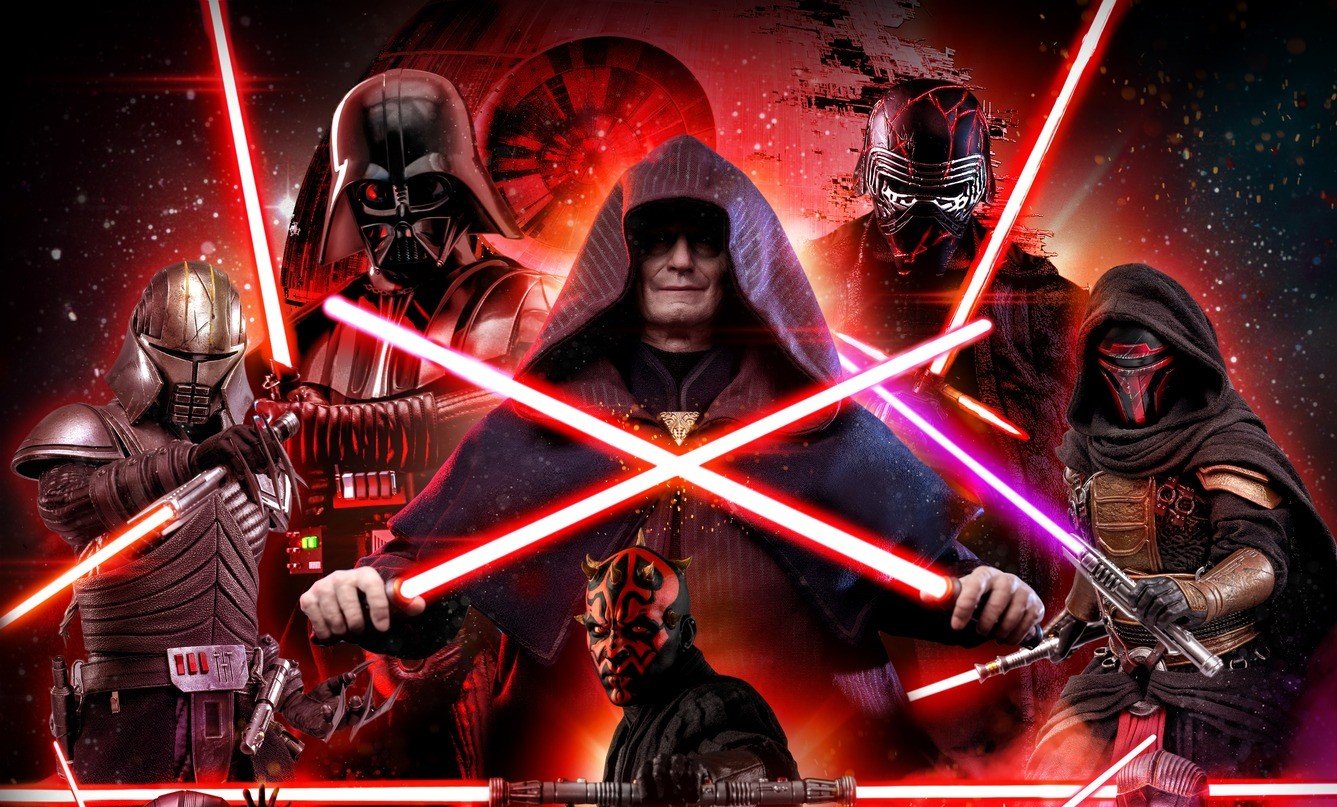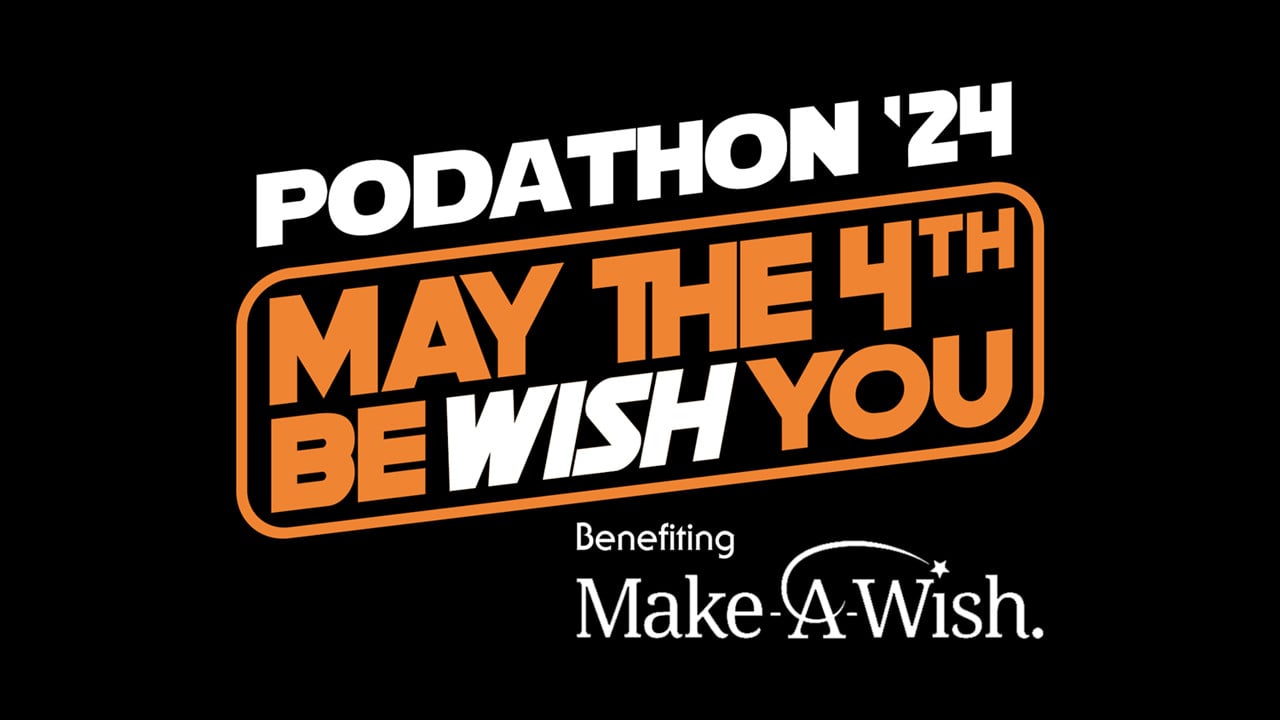Hellblazing the Trail: A Look Back at Constantine
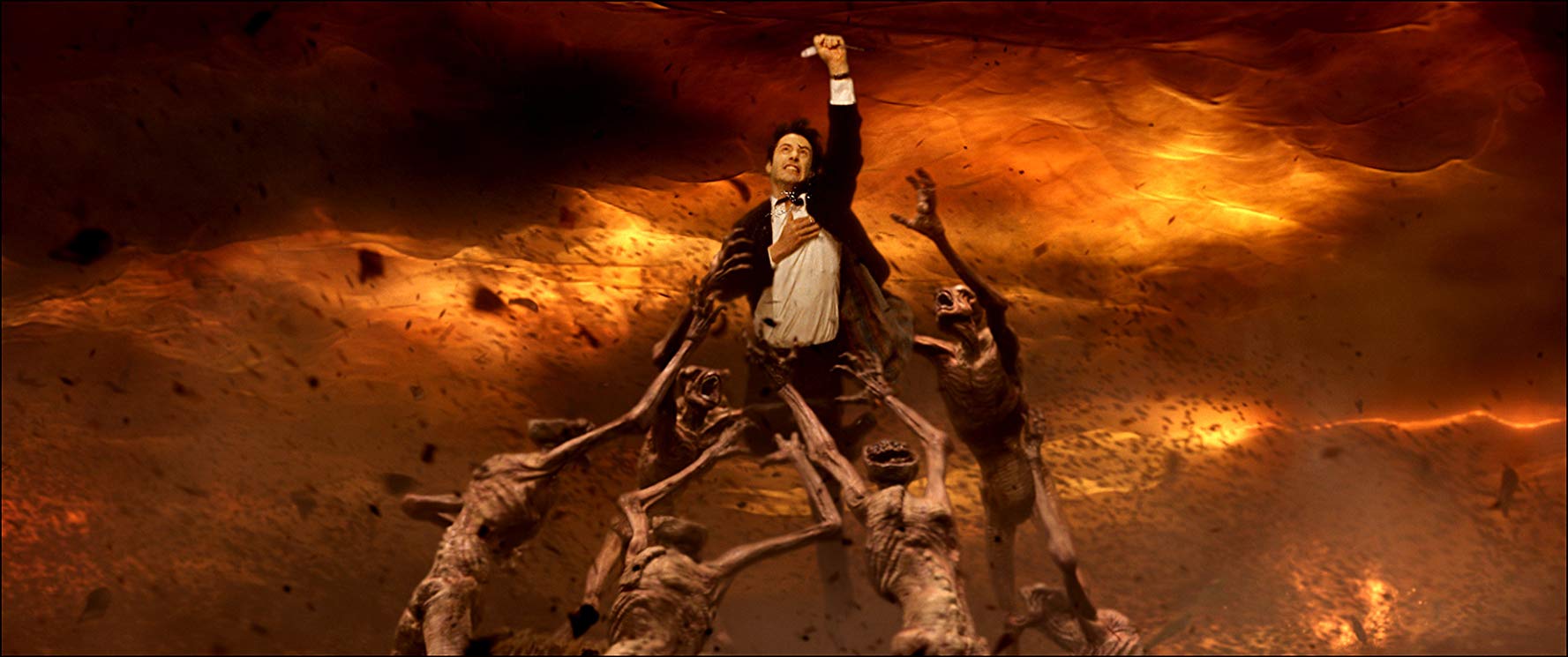
With the Keanussance fully underway and rumors circulating of his involvement in a future MCU project, let’s take a look back at Keanu Reeves first foray into comic book territory in honor of the 15th Anniversary of Constantine.
With the financial success and accolades heaped upon Todd Philips’s Joker and the massive success of last summer’s Avengers: Endgame, it’s safe to say that the age of the comic book film is not only well underway, but also in no danger of coming to an end anytime soon. And although Marvel Studios continues to be the top dog in this race, Joker‘s success and anticipation over forthcoming projects like the Wonder Woman sequel and Matt Reeve’s The Batman show that DC may finally be on their way to giving the MCU a run for it’s money.
But it wasn’t always this way. Allow me to cast your mind back to a simpler time…
Once upon a time in Hollywood, there was no such thing as the Marvel Cinematic Universe. Having not yet been acquired by Disney, Marvel’s top properties had all been sold off to the various major (and minor) studios and even the idea of an Avengers-style team up film seemed like a pipe-dream. Quality and financial success were also all over the place and for every Spider-Man and X-Men we’d also get a Daredevil or The Punisher. While by no means floundering, they were nowhere near the kind of success they would have under the leadership of Kevin Feige.
In the midst of Marvel’s attempts to claw its way out of bankruptcy, rival publisher DC would find major success in 2005 with the release of Batman Begins, the first of what would eventually become known as The Dark Knight Trilogy. With 1997’s Batman & Robin effectively killing the franchise, Christopher Nolan’s dark and gritty reboot was just the shot of adrenaline needed to bring the character back into the public consciousness and DC would ride that train right to the bank for another seven years.
Although easily the most successful, earning over $200 million domestically alone, Batman Begins was far from being the only comic book film released that year. Among them was another joint DC/Warner Bros effort; the Keanu Reeves-starring Constantine. While not financially successful enough to warrant a sequel nor at the same level of quality as Batman Begins, Constantine is a solid film that has aged fairly well and, in my opinion, is light years ahead in quality over similar efforts of the year like Fantastic Four, Elektra, and Son of the Mask. It’s well worth a second look for those who may have dismissed it at the time or those who never knew it existed. With this month marking the 15th Anniversary of it’s release, I can think of no better time to become reacquainted with John Constantine.
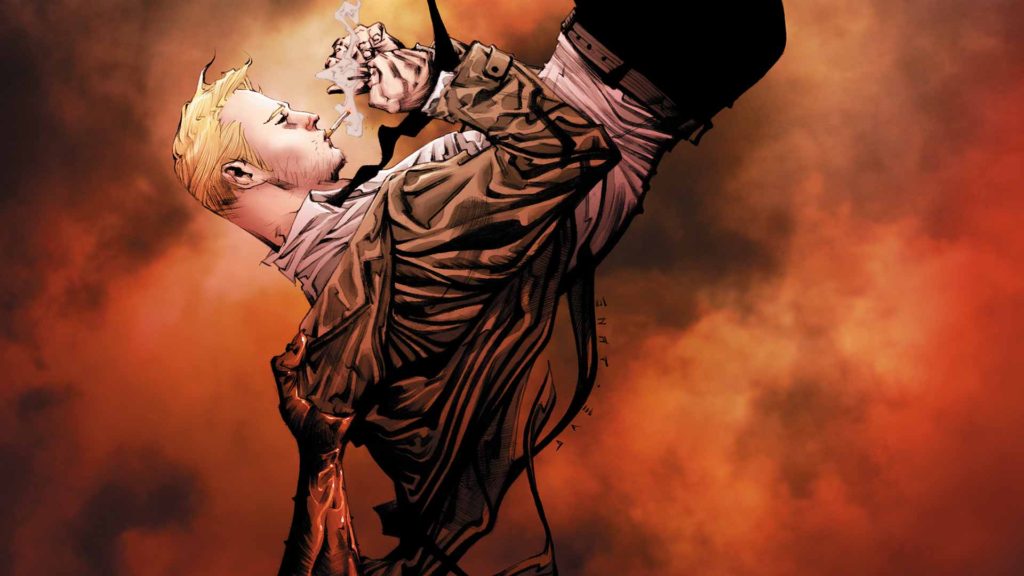
For the uninitiated, John Constantine is an uber-cynical, foul-mouthed, chain-smoking occult detective/magician based in Liverpool, England. Jim Butcher fans can think of him as sort of an unofficial British counterpart to Harry Dresden. The character was created by legendary writer Alan Moore back during his now-classic run on DC’s Swamp Thing, first appearing in issue #37 back in 1985, and his popularity as a supporting player would eventually lead to his own series three years later.
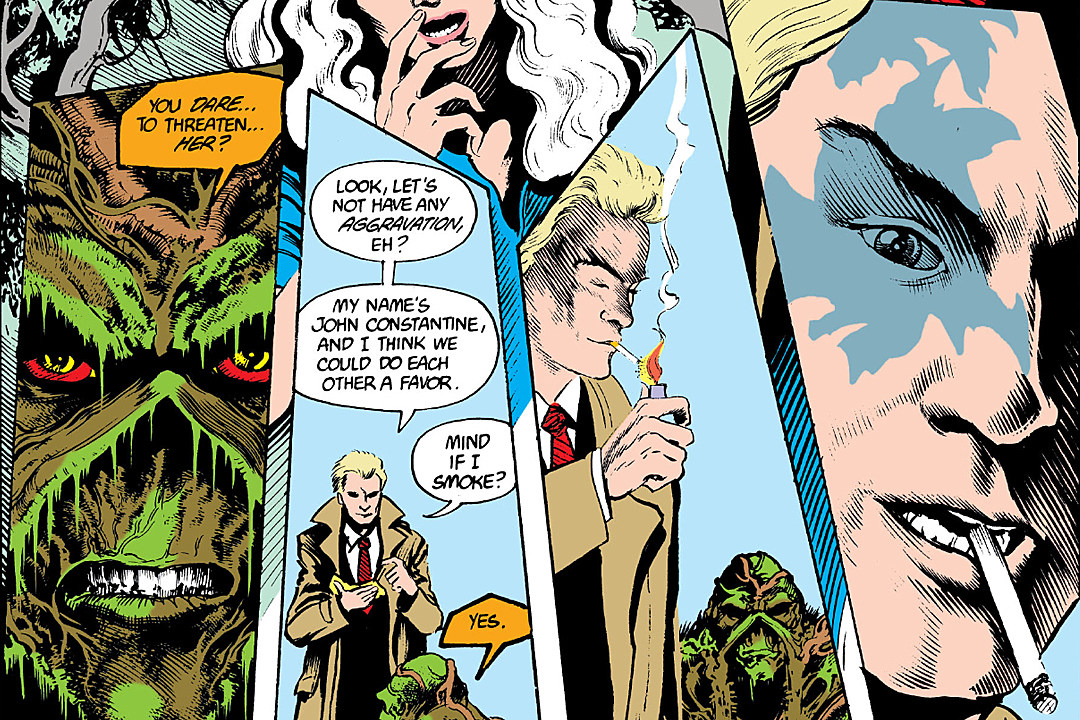
Titled Hellblazer, the book would serve as one of the main flagship titles of DC’s adult-oriented Vertigo line along with the aforementioned Swamp Thing and Neil Gaiman’s The Sandman. Running through 2013, Hellblazer would end up being Vertigo’s longest running title and the popularity of John Constantine as a character would result in a leading role in DC’s Justice League: Dark series, a short-lived TV series starring Matt Ryan, and of course the film we’re discussing today.
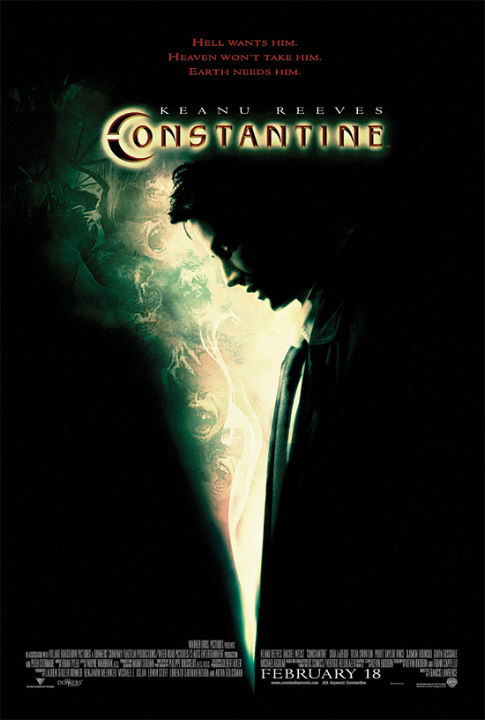
Taking its name from the character rather than the book it’s based on, Francis Lawrence’s 2005 film introduces us to an American John Constantine (Keanu Reeves) who works as a freelance exorcist-for-hire sending the demons populating the streets of contemporary Los Angeles back to hell. Although working on the side of good, Constantine isn’t doing any of this out of the kindness of his heart, but rather as a means of securing himself a one-way ticket back to heaven now that he’s been given a death sentence, and his past sins have already condemned his soul to hell.
However, his cynicism and selfishness will be put to the ultimate test when he meets Angela Dodson (Rachel Weitz), a police detective whose investigation of her twin sister’s suicide leads her not only to Constantine, but also a world of evil and demons living in the L.A. that she could never have imagined.
Probably the first and foremost criticism I usually hear in regards to the film is that it doesn’t adhere to the comic. It’s a standard complaint leveled at many a filmic adaptation of a property originating in another medium. That’s not to say that those kinds of complaints aren’t without merit. I’ve personally taken issue with a number of film adaptations of works that I love for straying too far from the original source material. Even so, in the case of Constantine I’ve never been able to fully understand this criticism.
While not based on any single story from the Hellblazer comic, Constantine does take scenes and plot elements from several stories throughout the book’s run. The most obvious is Constantine’s cancer diagnosis, taken from the “Dangerous Habits” story-line featured in Hellblazer issues #41-46. Aside from some tweaks made for the sake of the film’s overall plot, the major points of the story-line remain essentially the same.
Beyond this we’re also given a sequence that is inspired directly from an incident in the very first issue of Hellblazer. In the opening scene of the issue (titled “Hunger”) a man named Henry Wambach finds himself filled with an insatiable hunger and begins eating everything in sight at a local restaurant, even to the point of trying to chow down on some of the patrons. Turning out to be the victim of a spell, he eventually collapses and dies of starvation despite the massive amount of food he’s eaten.
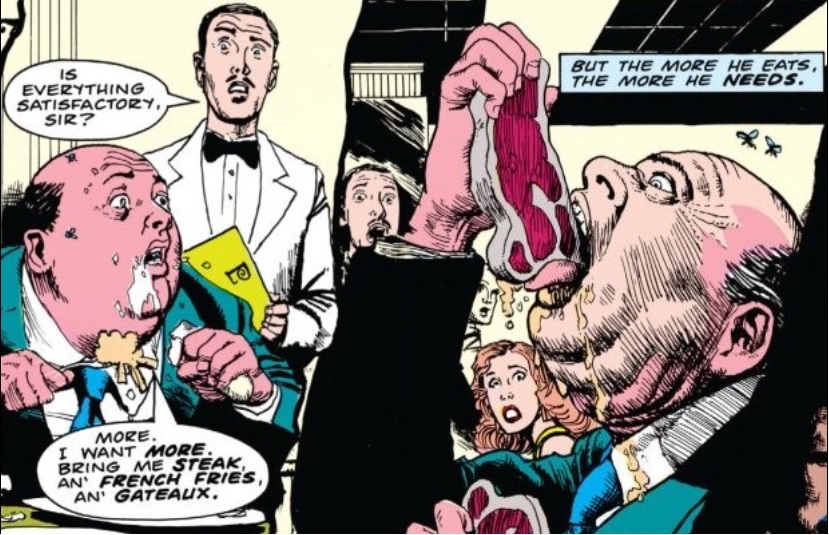
The parallel sequence in the film has Constantine’s associate Hennessy falling prey to a similar spell. Hennessy is a priest who also has the ability to communicate with the dead. In order to block out all the voices in his head (or at least that’s the excuse he gives) he drinks…a lot. Finding that Hennessy is interfering too much in his affairs, the demon Balthazar casts an incantation causing Hennessy to be overcome with an unquenchable thirst.
While not exact to it’s comic book counterpart, the inclusion of this scene is a nice nod to fans of the book. More importantly, it’s worked into the film’s plot in an organic way that makes sense to the story, rather then just being there as fan service.
In addition to sequences and plot elements, we also have the appearance of several characters from the book including Djimon Hounsou as Papa Midnite, Shia LaBeouf as Chas (Chandler in the comic, Kramer in the movie), Peter Stormare as Lucifer, and Tilda Swinton in her ultimate androgynous role as the angel Gabriel. And again, these characters aren’t just worked in for the sake of fan service. Each one, to varying degrees, are essential to the plot and exist to move the story forward. It’s a great example of having your cake and eating it too.
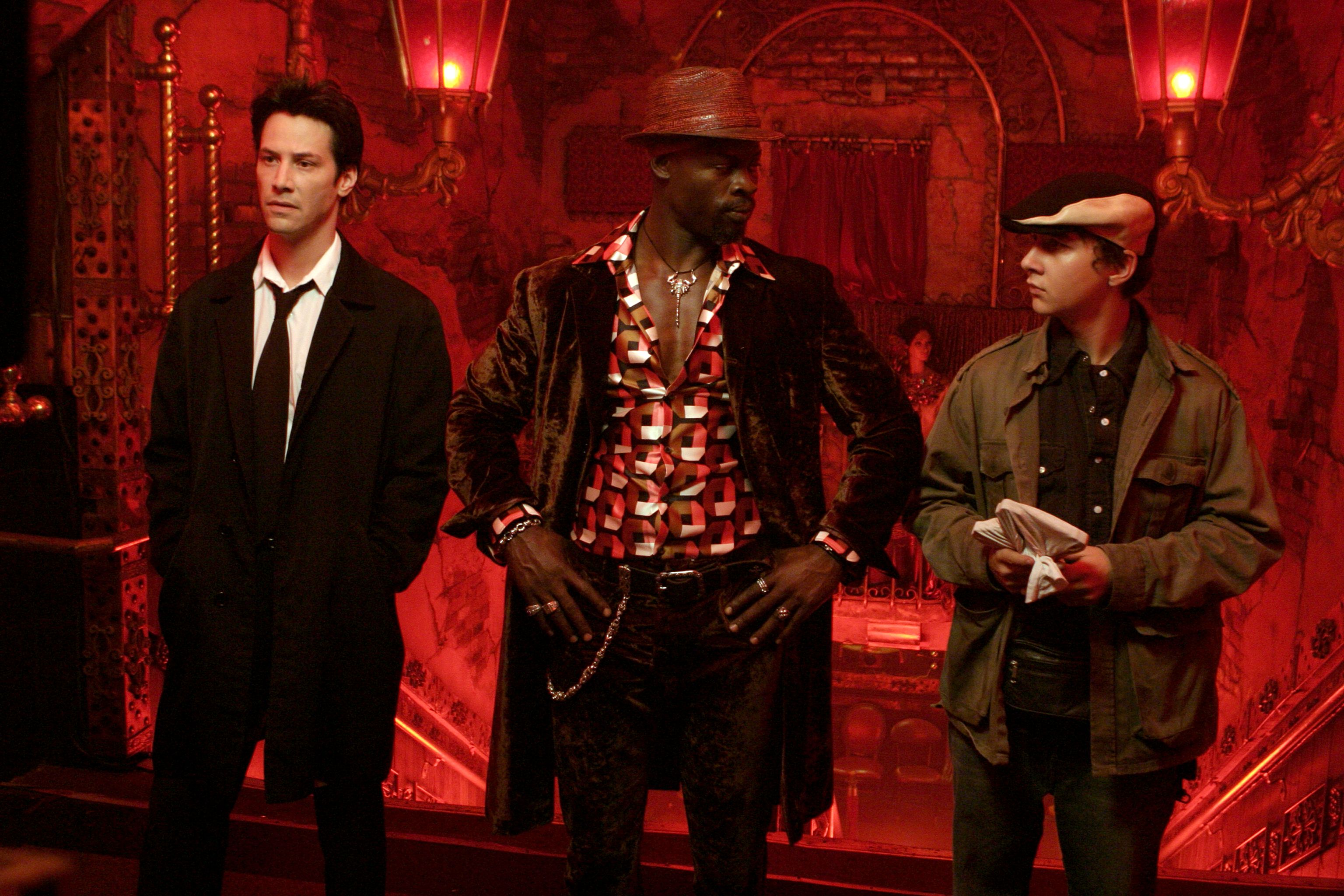
Now admittedly, there are a number of changes made from the original source material, but they are mostly cosmetic, and I’ve always been of the belief that changes like this are fine and forgivable as long as the spirit of the original material is maintained. If such things weren’t done or allowed, then Robert Downey Jr’s Tony Stark would have gotten shrapnel in his heart from stepping on a landmine in Vietnam and Tom Holland’s Peter Parker would be stuck with a gray haired old lady for an aunt rather then Marisa Tomei’s Aunt Hottie. So small things like changing Chas’s age and last name or changing the setting from Liverpool to Los Angeles don’t both me very much. The biggest change (and most fans biggest issue) has to do with the depiction of John Constantine himself.
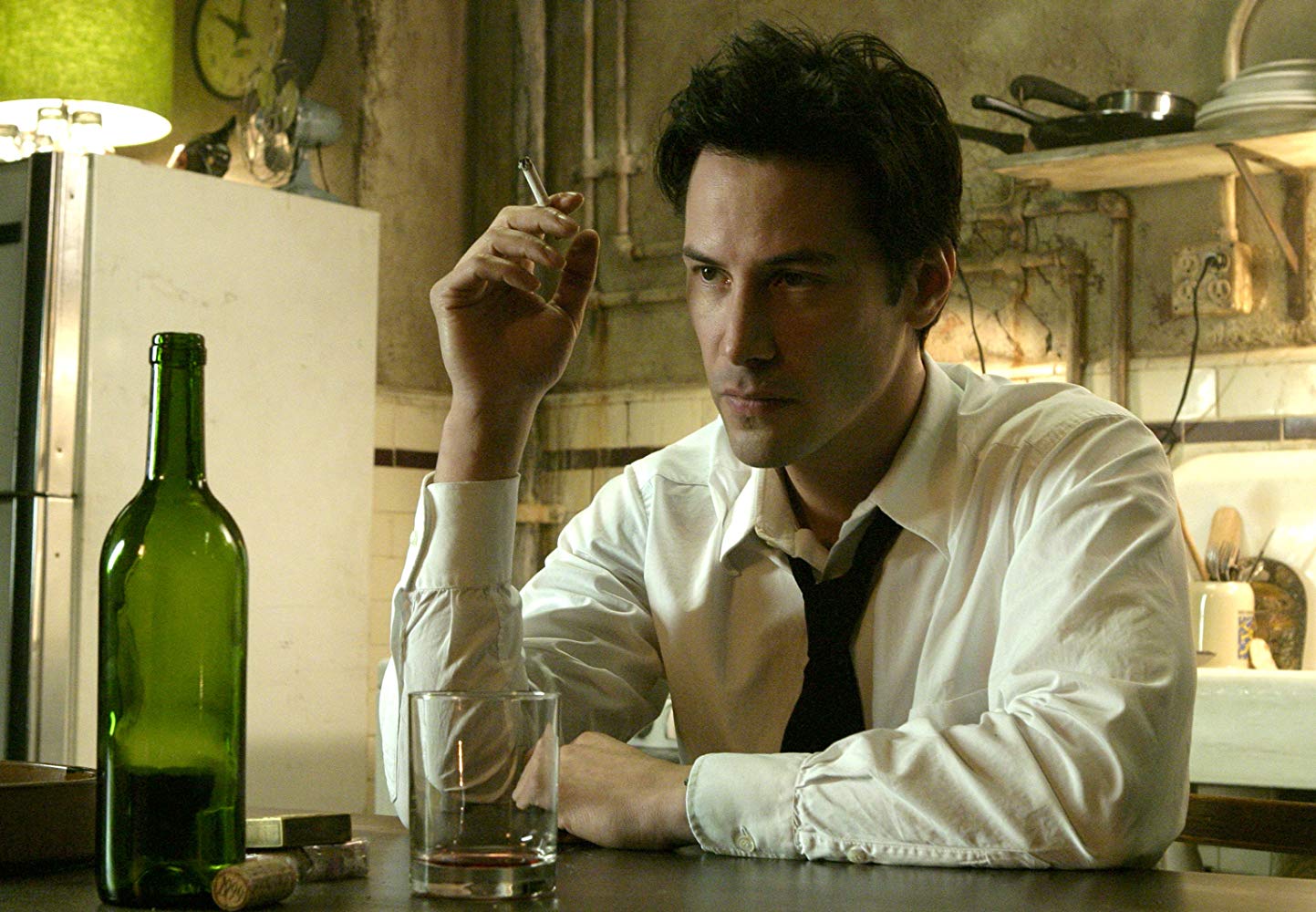
Fans of the comic know that visually, John Constantine (pronounced ConstanTIEne in the book, but ConstanTEEN in the film) is a blonde-haired Englishman with a tan trench-coat bearing a striking resemblance to pop-singer Sting. Based on that alone, Keanu Reeves is already a swing and a miss. (That being said, after his portrayal of Jonathan Harker in Coppala’s Dracula, I never want to see Keanu attempt an English accent ever again.)
On that note, I feel I should take a moment to admit that I’ve always been somewhat ambivalent about Keanu Reeves as a performer. Prior to the John Wick series and the current Keanussnace we find ourselves living in today, there was never a lot in his filmography that I was personally a huge fan of. While I loved both Bill & Ted movies to death and enjoyed the absurdity of Point Break, there was never anything about Keanu Reeves as an actor that made me a huge fan or look forward to what he would do next. And before anyone even thinks it, YES that includes The Matrix trilogy. While I’ve found the films entertaining, it was never Keanu’s performance that drew me to them. Keeping in mind that Constantine was released only two years after The Matrix Revolutions, it would be odd to imagine my opinion of him being any different this time around.
And yet…and yet…there’s something about the way he portrays John Constantine that completely won me over. This brings us back to the whole idea of cosmetic changes not mattering as long as the spirit of the piece (or in this case, character) is retained. And I honestly feel that Keanu Reeves nails the spirit and attitude of who John Constantine is.
Throughout the film, Keanu manages to convey a whole bevy of emotions that I didn’t think he was capable of doing at that time. He’s cynical and sarcastic to the Nth degree, but also conveys a great sense of loneliness and fear. One of the things I always loved about the film is this idea that Constantine is able to surround himself with people that are so close to being actual “friends,” but always manages to keep himself closed off enough that he never fully lets them in. This actually works very well in his relationship with Angela, as she slowly starts to become the first person he really fully let’s into his world.
The way John navigates that world is also an area that Keanu really excels as the character. In the context of the film, Angela is the representative of us as the audience; being introduced to this world for the first time and reacting with shock and amazement at what we find. But to John Constantine, the novelty of it wore off a long time ago. There’s a great casualness to the way he performs his exorcisms and employs his mystical weapons that show that while it all may be new and fantastical to us, to him it’s just another day at the office.
For me, the defining moment in the film that truly shows Keanu’s grasp on the character is shortly after he’s been diagnosed with cancer. Please observe:
That’s pure John Constantine ladies and gentlemen. He may not have the right hair or the right accent, but damn it…that IS John Constantine.
Beyond the performances and capturing the tone of the original comic, I’d be remiss if I didn’t give credit to Kevin Brodbin and Frank A. Cappello for a very effective and tight script. There are a lot of elements coming into play in this film, many of which could easily have fallen by the wayside or at the very least have been introduced as fodder for a follow up that was never to be; all left dangling and annoyingly unresolved. Instead, each element in the script exists to serve either the characters or the overall story. It all builds very naturally, eventually bringing all the elements together for a satisfying conclusion.
One of the elements I’ve always found lacking in a lot of big-budget sci-fi/action films is a coherent plot, or at the very least a coherent ending. Too often the spectacle of the piece is given priority and it becomes difficult to make sense out of just what’s happening as we ramp up to the conclusion. Constantine is one of those rare exceptions where everything is very clear and precise right up through the end, with John Constantine in particular given a wonderful character arc that feels both satisfying and correct. Everything comes full circle by the time the credits roll and I still remember walking out of the theater feeling thoroughly satisfied back in February of 2005.
In this day and age of the ever-expanding MCU and the ongoing attempts by DC and Warner to attempt something similar, it’s rare to find a comic book film that is as self-contained and entertaining as Constantine. While I personally wouldn’t have said no to the idea of a sequel, I feel that what we were given works perfectly fine on it’s own, and that’s really what the goal of any film always should be.
With Matt Ryan’s characterization having now been fully integrated into the CW’s Arrowverse and rumors of a possible live-action Justice League Dark film in the near future, it’s safe to say that the character of John Constantine won’t be going anywhere anytime soon. But no matter what the future holds, let’s not allow this earlier effort to fall into obscurity. For me, it remains as solid now as it was when it was first released, and that can’t be said for every film that I saw fifteen years ago.
So for all of you Vertigo fans out there down in the dumps over the cancellation of Swamp Thing or lamenting the end of HBO’s Watchmen, look to the past and get acquainted with DC/Warner’s original Vertigo bad-boy.
You’ve stayed hidden away for far too long John Constantine. It’s time to make your presence known again.
Into the light, I command thee!
